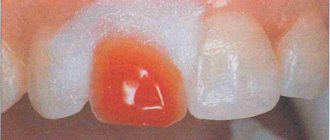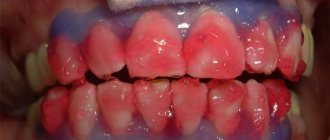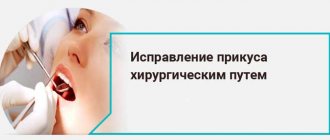HomeArticles
Perhaps every person knows what a toothache is. And everyone understands perfectly well that pain is a clear sign of the development of pathology, unambiguously “hinting” that it is time to visit the dentist’s office.
The fear of visiting the dentist is sometimes much stronger than the possible consequences of pain. To many this seems like torture. However, modern anesthesia for dental treatment is aimed at maximum pain relief during all procedures. The dentist chooses the method and method of anesthesia based on the complexity of the problem.
Use of anesthesia in dentistry
Not so long ago, some therapeutic procedures in dentistry were carried out without prior anesthesia, but it was dental treatment without anesthesia that became the main reason for the emergence of subconscious fears of the dentist. People put off meeting with a specialist until the last minute, risking serious complications of the disease. Currently, the dentist can choose the type of anesthesia that will be most effective for the upcoming treatment.
Anesthesia is the complete or maximum possible disappearance of sensitivity in the entire body or in a separate area. This effect is achieved by introducing into the patient’s body a special medication (anesthetic) that blocks the transmission of pain impulses to the brain. In dentistry, anesthesia is used to prevent the patient from feeling pain during treatment or tooth extraction.
“Freezing” in dentistry is used for the following manipulations:
- Implantation;
- Removal of tooth and remaining roots;
- Treatment of deep carious cavities;
- Prosthetics.
Options for local anesthesia of a sore tooth
Local anesthesia can be conditionally classified into the following groups:
- application;
- infiltration;
- conductor;
- intraosseous;
- intraligamentary.
Let's look at each in more detail.
Appliqué
This type of anesthesia for tooth extraction can only be used if a simple treatment is planned or if the gum area where the anesthetic will be injected needs to be made insensitive. More often, the application technique is used when providing dental care to young children. Baby teeth do not have branched roots and, when they are already thoroughly loosened, before pulling them out, it is quite possible to limit yourself to applying a local anesthetic. The latter usually contains lidocaine or benzocaine.
Infiltration
A very common option for pain relief. Involves injecting the medication directly into the gums. As a result, the treated area, part of the cheek, lip and tongue become numb.
The technique is suitable if the therapy is simple and takes little time, for example, when pulling out baby teeth. It is offered to adults if the unit is already highly mobile and can be easily grasped with forceps.
Anesthesia wears off after tooth extraction within three to four hours. Then the usual sensitivity gradually returns.
Conductor
A more serious option for pain relief. It is used if several teeth need to be removed at once. This is possible if preparation for prosthetics is underway. The doctor makes an injection into the gum and injects an anesthetic. But the needle is installed in such a way that after the injection, not only individual nerve impulses are blocked, but the peripheral branches of the nerve. Due to this, a large area is covered.
Taking into account exactly where the medicine is injected and which tooth is to be removed, conduction anesthesia is divided into:
- Mental. Suitable if you need to pull out canines, incisors, premolars.
- Tuberal. Only used when working with molars.
- Thorusal. It is used if several lower units located in different zones are to be pulled out.
To select the most appropriate anesthesia option for tooth extraction, the doctor examines the oral cavity. In rare cases, the injection is given extraorally. Then the needle is inserted into the gum tissue directly through the cheek.
Intraosseous
With this type of anesthesia, an injection is made directly into the bone tissue. Using a long needle, they reach the bone plate that forms the frame for the tooth. As a result, the surrounding soft tissues remain sensitive and do not go numb.
The intraosseous technique is indicated if it is necessary to remove unerupted and incorrectly located units of the oral cavity. Sometimes it is used when operating on the lower jaw, since it is easier to perform such technically complex anesthesia.
It is important to understand that intraosseous anesthesia renders only the treated tooth numb. If its roots go very deep or intertwine with neighboring ones, it makes sense to use another option for pain relief.
Intraligamentary
The anesthetic is injected directly into the tissue, and not into the nerve, that is, the work is carried out exclusively with the periodontal space. The injection is given under great pressure, but it causes almost no pain.
The intraligamentary technique is optimal if it is necessary to remove premolars, molars, incisors and canines in a child. Sensitivity is lost almost immediately.
Within a minute after the injection, the unit becomes “frozen.” The freezing effect lasts for about 20 minutes. This is quite enough to perform a simple surgical operation.
Types and features
Pain relief is divided into local and general (anesthesia). Local anesthesia can be performed using medicinal or non-medicinal methods.
Non-drug anesthesia, in turn, is divided into:
- Audio analgesia;
- Hypnoanalgesia;
- Electroanalgesia.
- Computer anesthesia.
The drug analgesic process refers to an injection through which an anesthetic drug is injected into the blood or tissues. The anesthetic blocks the conduction of nerve impulses for a relatively short period, during which dental surgery is performed. After a certain time, the injected anesthetic is broken down in the body and the sensitivity of the “frozen” area is completely restored.
Local anesthesia includes several types:
- Infiltration;
- Application;
- Conductor;
- Intraligamentary;
- Stem;
- Intraosseous.
General anesthesia in dentistry is used quite rarely, as this method has a number of features. However, in some situations, especially when there is a severe form of dental pathology, children have their teeth treated using anesthesia. In this case, all manipulations are performed under the strict supervision of an anesthesiologist.
This anesthetic once marked a real breakthrough in dentistry. There is an opportunity to replace toxic and dangerous cocaine.
Novocaine is widely used for local anesthesia - mainly for infiltration; It is of little use for superficial anesthesia, since it slowly penetrates through intact mucous membranes.
For infiltration anesthesin, 0.25 - 0.5% solutions are used, for conductive anesthesia - 1-2%. The analgesic effect develops slowly - after 10-20 minutes, and lasts from 15 to 30 minutes. When adding adrenaline (1 drop per 10-15 ml of solution), the duration of action increases to 60 minutes.
Novocaine is also prescribed for therapeutic blockades in the treatment of chronic inflammatory diseases and purulent processes, neuralgia, poorly healing ulcers, etc. Novocaine blockade aims to weaken reflex reactions that occur during the development of pathological processes. Using electrophoresis, 0.5-2% novocaine solution is administered in the treatment of neuralgia, paresthesia, and periodontal diseases.
Novocaine is relatively low-toxic, but more often than other anesthetics it causes allergic reactions. With increased sensitivity, general weakness, nausea, dizziness, hypotension, increased heart rate, etc. may be observed. Angioedema and even anaphylactic shock may develop.
Novocaine reduces the activity of sulfonamide drugs, because one of its metabolites is para-aminobenzoic acid, and the antimicrobial effect of sulfonamides is based on competition with this substance.
Release forms: 0.25% and 0.5% solutions in ampoules of 1; 2; 5; 10 and 20 ml and 1% and 2% solutions, 1; 2; 5 and 10 ml; 0.25% and 0.5% sterile solutions of novocaine in bottles of 200 and 400 ml
In general, novocaine is used relatively little in dentistry and is practically replaced by lidocaine.
see also
Reforms of maternal and child health services. In the village, obstetricians-gynecologists (as well as pediatricians) will be replaced by a general practitioner. In the city, obviously, antenatal clinics will merge with clinics (as part of the formation of group doctors ...
Glomerulonephritis Glomerulonephritis (also glomerular nephritis, abbreviated as GN) is a kidney disease characterized by inflammation of the glomeruli. This condition can be represented by isolated hematuria...
Conclusion The mentioned nanoparticle-based delivery methods, as well as the general level of development of modern molecular biology, biotechnology and pharmacology, significantly modify the concept of ...
Advantages and disadvantages
Each type of freezing has its own advantages and disadvantages.
Doctors highlight the following factors as advantages of local anesthesia:
• The patient remains conscious during the manipulation. The numbness extends to a fairly limited area of the jaw, with no effects observed in the rest of the patient's body. The person in the dental chair can control himself;
• Minimizing the effects of freezing. The drugs used for pain relief have virtually no negative effects on the patient’s nervous and cardiovascular systems. Doses of anesthetic are too small to cause malfunction of vital organs;
• Short-term effect of anesthesia, which is especially preferable for simple dental operations (placement of a filling, removal of a crown, etc.);
• There are virtually no side effects after freezing ends. Unlike general anesthesia, the recovery from which is accompanied by rather serious symptoms, local freezing “goes away” without consequences. In very rare cases, the patient may experience mild headaches, but they are most often caused by damage to the nerve endings during the manipulation process.
The disadvantages of local freezing are as follows:
• An allergic reaction to the anesthetic may occur. To avoid such a development, the dentist must test the patient for the drug;
• Sometimes the patient's body does not respond to the administered drug. This is due to the peculiarity of the human nervous system. The anesthetic may not always block nerve impulses and sensitivity in the problem area will remain. In this case, the doctor either replaces the anesthetic or recommends performing the operation under general anesthesia.
Is anesthesia harmful during pregnancy?
It is advisable to treat teeth during pregnancy with anesthesia using drugs containing vasoconstrictor components. A short-term narrowing of blood vessels will “slow down” the blood flow for some time, and the drug will have time to be neutralized before its microparticles penetrate the placenta.
During the period of bearing a child, every pregnant woman is under close medical supervision. And the dentist’s office is also on the list of obligatory visits for the expectant mother. The fact is that fetal formation requires a lot of calcium. The embryo takes it from the mother's body. As a result, the woman begins to have problems with her teeth. Timely elimination of these problems will allow you to avoid serious dental diseases.
Pregnancy at different stages has different effects on a woman’s body. The use of strong anesthetics in this situation is undesirable. Most often, for treatment and tooth extraction, a pregnant woman is given an injection of Ultracain or Ubistezin. Today, this is the safest anesthesia for pregnant women, with a minimum of side effects.
Pain relief during breastfeeding
The availability of modern safe drugs for pain relief allows dentists to treat teeth during lactation. However, if a nursing mother is undergoing a serious operation that requires long-term pain relief, then it is necessary to agree with the doctor on some issues, namely:
- What specific substance will be used in the “freezing” process;
- What side effects are there;
- What is the period for the removal of active anesthetic substances from the body?
In this case, you can choose an anesthetic and anesthetize the dental operation without fear of harming the baby; everyone knows that everything that enters the blood of the mother’s body inevitably ends up in breast milk.
It is not advisable to use general anesthesia when breastfeeding. If circumstances arise that dental procedures cannot be performed without general anesthesia, then the woman will have to interrupt breastfeeding while the drug is removed from the body.
The use of anesthesia in pediatric dentistry
There are no absolutely safe anesthetics. The child's body is often very sensitive to medications, so the likelihood of complications after pain-relieving injections is quite high. But even without anesthesia, treating children’s teeth is an unacceptable option. Children tolerate dental procedures worse than adults.
Previously, doctors used Novocaine and Lidocaine for freezing. However, the first drug has a very weak analgesic effect, and the second has quite strong side effects. After an injection of Lidocaine, the child often experienced nausea, weakness, and headaches. Now dentists consider Mepivacaine and Aricaine the safest anesthetics for children. They are used when removing baby teeth, opening abscesses and other dental operations.
The drug "Scandonest"
It is an anesthetic based on mepivacaine. It does not contain adrenaline, preservatives or other harmful components. It is used for intolerance to articaine or adrenaline. This drug can be used in the elderly, patients with diabetes, hypertension, bronchial asthma and even pregnant women. In addition to the analgesic effect, mepivacaine has the ability to constrict blood vessels, so additional adrenaline is not required. An analogue of the drug "Scandonest" is the anesthetic "Mepivastezin".










